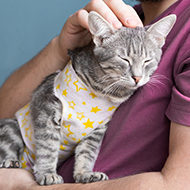11,000 Gabon elephants lost to poaching
Gabon's government said this week that the Minkebe national park rainforest has lost 11,000 elephants to poaching in under a decade. The rapid loss has been provoked by the rising demand for ivory in Asia.
About half the world's remaining forest elephants, around 100,000 in number, reside in densely forested Gabon. Forest elephants are the smallest species of elephant and coveted by ivory dealers for their harder and straighter tusks.
A recent study by the Gabon government, conducted alongside WWF and the Wildlife Conservation Society, found that nearly two-thirds of the forest elephants in Minkebe park had been lost to poaching. This equates to around 11,100 in number.
In a statement from Gabon's presidency, Lee White, executive secretary of the country's national parks agency, said: "If we don't reverse this situation rapidly, the future of elephants in Africa will be compromised."
According to a park official most of the poachers are believed to be from neighbouring Cameroon, where army helicopters and hundreds of troops have been deployed by the government to protect their own dwindling elephant population.
The arrest last week of at least one gendarme found transporting tusks in a government vehicle has underlined the troubling risk of corruption in what is becoming an increasingly lucrative black market trade.
Bas Hujibregts, head of WWF's anti-poaching campaign in the region said: "If we do not want to lose the last elephants in central Africa, the illicit ivory trade needs to be treated as a grave crime that corrupts governments and seriously undermines economic development and security."
Demand for ivory is increasing rapidly in Asia, where it is used largely for jewellery and ornamental items. Conservationists say investment in Africa and growing Chinese influence has opened the door wider for the illegal trade in elephant tusks. It is estimated that in 2011 alone, around 40 tonnes of illegal ivory was seized worldwide, and 2012 figures are expected to be similar according to conservation group Traffic.



 RCVS Knowledge has called on vet practices to audit their post-operative neutering outcomes.
RCVS Knowledge has called on vet practices to audit their post-operative neutering outcomes.